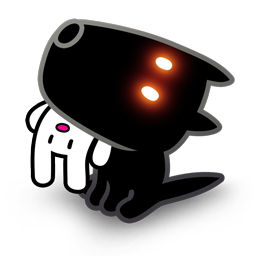So… what’s become of Treasure Tomb?
Well, it’s another one of our unfinished projects temporarily on ice. Treasure Tomb is going to take a lot of work before we reckon it’s awesome enough to release, in the form of level design and loads more graphics. In fact I suspect there’s another six months work left in Treasure Tomb, and in the meantime, once again, we are broke 🙁
But… what’s all this?
Yes, that’s right, it’s another game we’ve been working on in the meantime! We started mid-December after realising that Treasure Tomb was just going to take us too long to complete before we became utterly skint. The rationale behind it was to create a game that used as much code from Treasure Tomb as possible so it took the absolute minimum time to write. Of course the code bit doesn’t necessarily really take nearly as much time as the graphics and sound bit but there we go. In order to keep the costs down we’ve done more silly Ultratron style graphics and got a single tileset built in layers that we can colour differently.
So… what exactly is this new game?
Well …. back in 1985 a rather brilliant game for the Commodore 64 came out called Paradroid. We all read eagerly about its imminent arrival in Zzap64! magazine, which published a diary over three months of the programmer, Andrew Braybrook. Andrew Braybrook is a really nice guy. Once upon a time when I was a wee bairn I wrote to him asking how to do raster interrupts on the 64, and he wrote back with four pages of beautifully handwritten script, including 6502 machine code (also handwritten!).
When Paradroid finally turned up we all rushed out and bought it from the shops – I think it was £8.95 on cassette. And it’s a truly awesome game!
You can play what more or less amounts to a perfect clone of Paradroid with this remake, Freedroid, which differs only in that you use the mouse to aim.
Anyway – we’ve given Paradroid the same treatment that we gave Space Invaders and Robotron. It’s been Puppified, sliced, diced, and aweseomificated beyond recogntion, and it’s going to be released on to an unsuspecting Indie gamer scene in about a month, which is just as well as that coincides with all my money running out.






 I found a very cute game over at
I found a very cute game over at 



 Linux users rejoice! We’ve fixed the Linux versions of
Linux users rejoice! We’ve fixed the Linux versions of 




